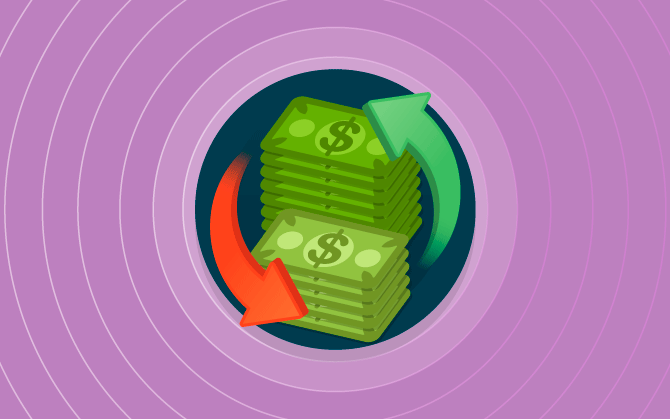
What is profit margin and how to calculate a product’s financial return
Calculating profit margins is essential for the management of a business and for the pricing of products. Learn more here!

What will we see in this post
When we create a business, more than the dream of having autonomy and developing something in accordance with what we believe in, we intend to turn this business into a source of income.
In order for this to work without errors, it’s key that you understand certain basic concepts, so that all the work is converted into something that is financially profitable. And one of the main concepts in this universe is the profit margin.
Do you know what it is and how to calculate a product’s profit margin? We’ll tell you all about it below. Keep reading!

Understanding the concept of profit margin
In order to understand the concept of profit margin, first it is necessary to know what profit is. Overall, profit corresponds to the positive return we obtain from a given investment.
However, within the corporate universe, in addition to understanding its meaning, it’s necessary to differentiate the concepts of gross profit and net profit.
Gross profit
Corresponds to the final revenue obtained after the sale of a product, subtracting from this amount the costs employed in its production.
If you’ve sold a product for USD 15,000.00 and the materials used in the production cost USD 8,000.00, your gross profit is USD 7,000.00;
Net profit
On the other hand, net profit corresponds to the result obtained from the subtraction of the final revenue minus all company expenses. In this case, we include taxes, charges, expenses with utilities, internet and other expenses to the amount.
In the previous example, if these amounts add up to USD 2,000.00, the operation’s net profit would be USD 5,000.00.
Profit margin
Therefore, we consider the profit margin as the percentage we add to the product’s total cost, which defines the price for which it will be sold to customers. Of major importance for a business’ success, it is critical for the pricing of products and services.
We can divide this margin into three key elements, which are costs, sales price and profit:
- Costs: as you might imagine, are the amounts involved in the production of what will be sold. This concept includes elements, such as taxes, shipping, utilities, internet, labor charges and others;
- Selling price: is key for a business’ success. Ideally, you should balance costs while researching prices practiced by your competition;
- Profit: corresponds to the percentage that the business will receive for the sale of a product.
Understanding your profit margin correctly
Calculating the profit margin is essential for the success of any business. Therefore, you need to pay attention to the three concepts involved in this scenario: net margin, gross margin and markup.
These are the margins that help analyze a business’ profitability, making it easier for entrepreneurs to understand which department or products is most lucrative.
The first step to calculate these margins without errors is to understand the need of doing this for each product or service of your business. Many entrepreneurs end up making an overall calculation and obtaining a positive result, forgetting to analyze unprofitable products.
Based on this assumption, you can use the three concepts that we’ll explain below to analyze your business in an organized and efficient manner.
Net margin
As the name says, the calculation of the net margin is done according to your product’s net profit. To do so, just divide the net profit by your total revenue and multiply the result by 100.
Following the previous example, we have:
USD 5,000.00 / USD 15,000.00 x 100 = 33.3%
This means that the net profit margin is 33.3%.
Gross margin
The gross profit margin is calculated in the same manner, but replacing the amount of net profit for the gross profit obtained on your product.
Thus, through the example shown, we obtain:
USD 7,000.00 / USD 15,000.00 x 100 = 46.6%
In this case, the gross profit margin is 46.6%.
Markup
Finally, but not less important, we have the markup. It is an essential element in the pursuit for a business’ sustainable growth, and at the same time, is one of the most unknown to the general public.
Its difference to the net and gross profit margins is that it also takes into account the profit desired by the business.
This is why the markup is key in the step of pricing the product, since it facilitates the visualization of the price possibilities to be charged.
There are three types of markup that we detail below:
Total markup
This calculation includes all costs of the business, from taxes to expenses with inputs and personnel. The calculation is done by dividing the desired profit by the total cost.
Product markup
Calculating a product’s markup is a more specific task. In this case, we take into account only the costs involved in manufacturing the product, similar to what we do with the gross profit.
The difference is that the calculation also considers administrative and sales expenses, in addition to the desired profit.
Thus, the result is obtained by dividing the sum of the desired profit plus the administrative and sales expenses by the manufacturing cost of the product.
Variable markup
Finally, the variable markup weighs the fixed costs and expenses. The result corresponds to the ratio between the desired profit plus the fixed costs and expenses by the variable costs and expenses.
Learn about the variables
Analyzing the possibilities to calculate the profit margins explained, this task seems pretty easy to perform, doesn’t it?
However, checking a few variables so that the calculation adds up perfectly is crucial.
Employee remuneration and the seasonality of inputs, for example, are essential factors that completely change the amounts dedicated to production costs.
In this case, you should find the average of these expenses over a period and calculate your margin based on it.
Another important point is to analyze the entire sales cycle of your product. All investments made, from the promotion of the product to after-sales procedures must be used as elements that will help you compose the final price. Otherwise, you’ll probably suffer losses in your business.
Knowing your profit margin is as essential as knowing what return you’ll have after so many investments.
Therefore, the best thing to do is to monitor one of the most important metrics of the market: ROI. So make sure you check out our article in which we explain what ROI is and how to measure it in your business!




